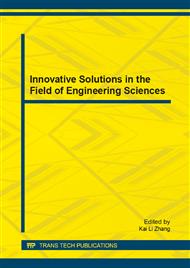p.500
p.506
p.511
p.516
p.521
p.529
p.534
p.539
p.546
The Locating and Sizing of Distribution Generation Based on the Distribution Network
Abstract:
According to the national policy of energy conservation and emissions reduction, using renewable resources and new energy to reduce environmental pollution. Reforming power distribution network system for housing estate in taiyuan. Access to distributed power supply, researching the exact location and capacity. By analyzing the distributed generation of the impact of distribution network,the objective function including investment and operating maintenance cost, environmental factors, network loss costs; putting power flow , current, voltage, system capacity constraints as constraint conditions, Using particle swarm optimization (PSO) algorithm with inertia weight, determine the location and capacity of distributed power supply. The proposed method is testified on the IEEE-33 bus system,and get the reasonable installation position and capacity, the simulation results will be used in transformation housing estate in taiyuan.
Info:
Periodical:
Pages:
521-525
Citation:
Online since:
June 2014
Authors:
Price:
Сopyright:
© 2014 Trans Tech Publications Ltd. All Rights Reserved
Share:
Citation:


